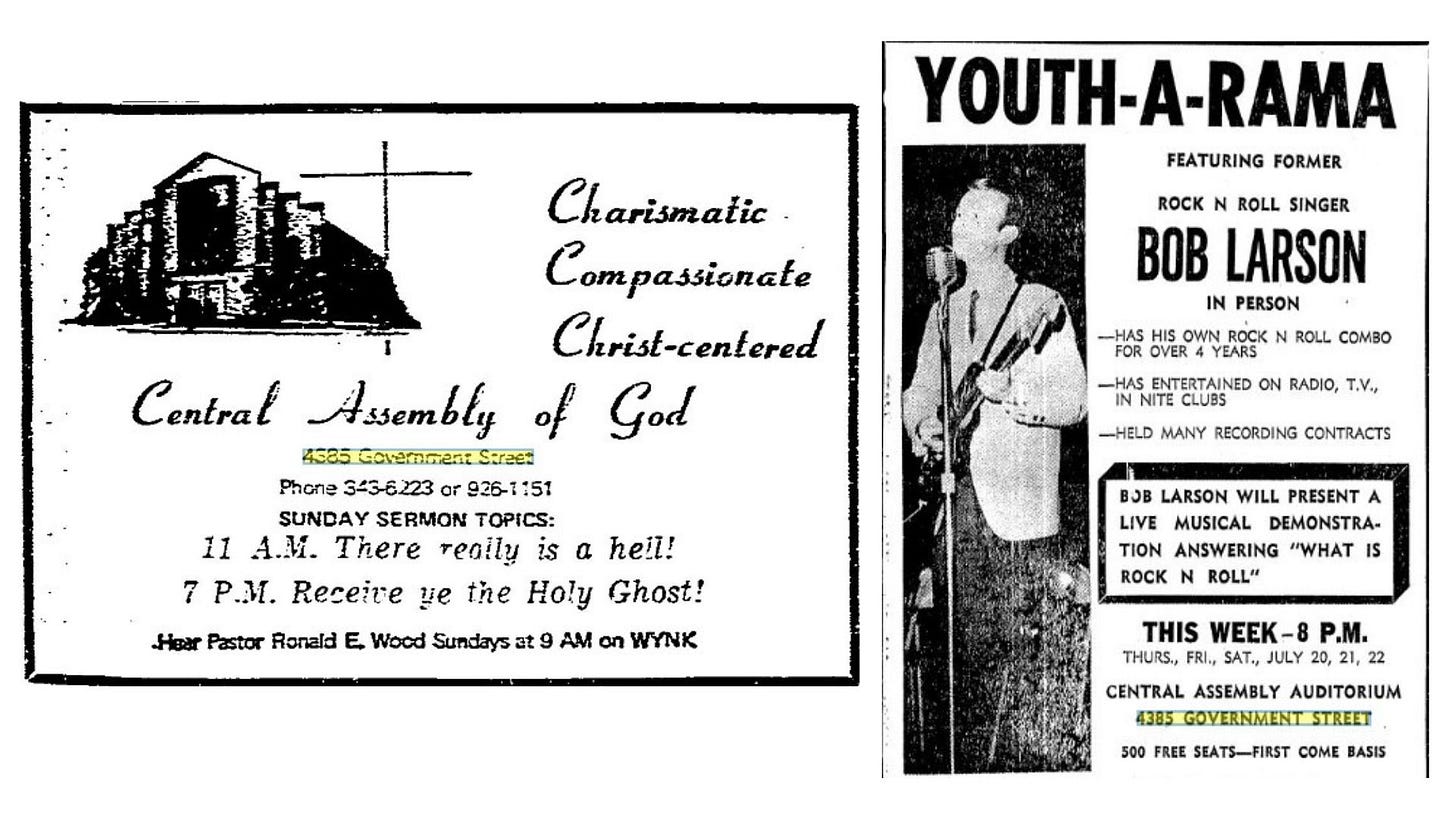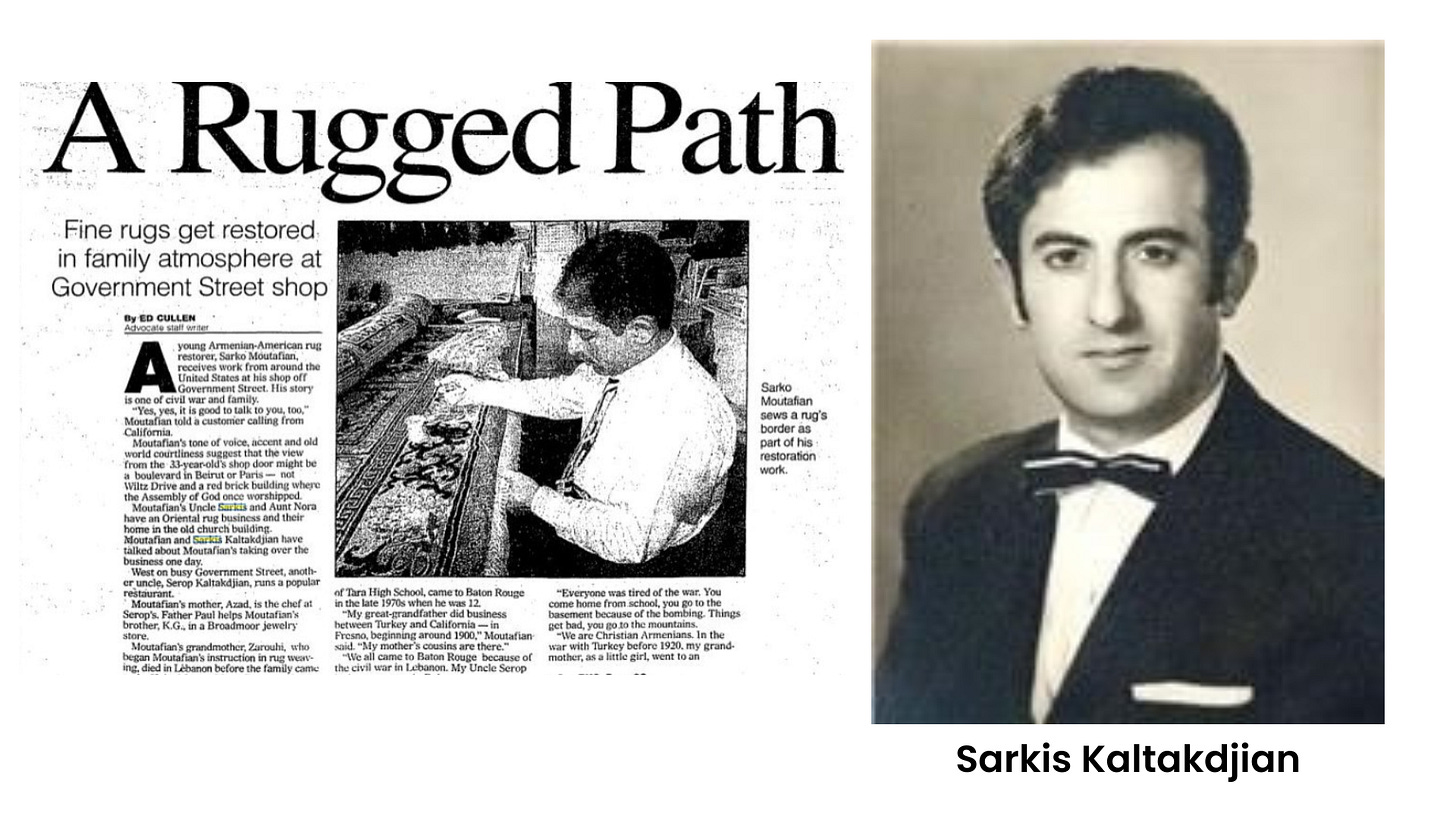4385 Government Street: Former church transforming to become Youth City Lab
The new headquarters for Front Yard Bikes is located at 4385 Government Street in a massive building that will eventually serve as the homebase for the Youth City Lab, a collective of nonprofits all providing programming for disadvantaged youth and teens in Baton Rouge.
WATCH: Youth City Lab announcement
Dustin LaFont is the founder and executive director of Front Yard Bikes. He started the nonprofit organization in 2010 when he was working as a teacher in the public school system. Afterhours, kids would ask for his help fixing their bikes. They gathered in the front yard of his South Baton Rouge home, hence the name.
RELATED: This former history teacher is helping hundreds of kids turn bikes into vehicles of opportunity
Today, students work to build their own bicycles at the main location on Terrace Street. They earn credits from learning skills and those credits can be applied towards purchasing their own bike to keep. It’s a safe space for kids to go after-school and continue learning without even fully realizing that's what they’re doing.
“We work diligently to keep our kids accountable in the classroom as they strive for their high-school diplomas,” states the FYB website. “From recognizing positive behaviors to providing academic assistance during our Wednesday tutoring program, our kids understand the value of their education as they prepare for the job market.
The Government Street building is the secondary location and is the retail side of the operation. The donated bikes fixed up by the kids are sold at the retail shop and all the funds go back to the program. It started when the former owner of Mid City Bikes, Travis Hans, decided to close shop and move out of state.
With the closing of the bike store, LaFont saw an opportunity to help expand the Front Yard Bikes program. Along with generating revenue, the shop serves as a way of helping the students transition their practical skills into paychecks.
“This summer we’re planning to have 30 young people hired and that’s an undertaking,” LaFont said during a tour for the Downtown East Social Ride. “Some of our students have been able to get better, high paying jobs as we’ve advocated and put in their resume their experiences.”
Everytime you make a purchase at the bike shop, you’re helping those kids, too.
“We bought Mid City Bikes and I had $2,000 in the bank account. I said, alright, let’s try to run a bike shop. And we did that. We survived, and survived, and survived and even broke even. And now, miraculously, through grace, we’ve been able to get this far.”
In the beginning
The building was constructed in the 1950s and served as the home of the Central Assembly of God, which is a branch of the protestant wing of Christianity. It is one of the fastest-growing denominations in the history of protestant Christianity, so it isn’t surprising there was a congregation located in what was then the heart of Baton Rouge.
Over the next couple of decades the church flourished with activity. They had guest evangelists, musical performances, and they screened a lot of movies. In 1972, Pastor Ron Woods took to the airwaves and produced a daily radio segment on WLUX 1550. That station was owned by the infamous Jimmy Swaggart.
Swaggart began as a pentecostal preacher in the Assembly of God church and began his own ministry, which is now known as the Family Worship Center. At the same time Swaggart was rising to fame, the Assembly of God church was outgrowing its home on Government Street.
They attempted expansions but that still wasn’t enough.
“They wanted to add on a bunch of rooms and classrooms and teaching areas,” LaFont said during a tour of the building. “They added this building around it. It was actually a terrible idea and probably why it led them to sell it because it took away all their parking and space to do anything else.”
They decided to construct a new building on a 10-acre site located on Jones Creek Road. On January 14, 1978, they held a groundbreaking ceremony and during the construction process, they temporarily relocated to 9526 S. Choctaw.
“The new facilities will be a contemporary design enclosing 9,000 square feet at an expected cost of $200,000.” That’s just under a million dollars when you calculate for inflation.
With the move, the Central Assembly of God changed its name to Harvestime Assembly of God. In 1991, the building was purchased by the Baton Rouge Junior Academy, which changed its name to the Jones Creek Adventist Academy.
RELATED: Baton Rouge Seventh-day Adventist School - How it all began
Now, that’s where I lost the scent of that particular congregation. There are other Assembly of God congregations located in Baton Rouge. And if you’d like to read why Jimmy Swaggart gets the infamous title, click here.
In the middle
When the Central Assembly of God left Mid City, they left behind an incredibly substantial building that caught the eye of a young Armenian-American family.
Sarkis Kaltakdjian, a native of Damascus, Syria, left his home as a young man to study interior design in Paris. Then, he moved to the United States to start his family with the love of his life, Nora Keshishian.
The couple opened Sarkis Oriental Rugs in March 1976. The original location was a couple doors down at 4213 Government Street. When the church left, they purchased the building and turned the classrooms in the back into residential space.
The business was a family affair and was eventually taken over by Sarkis’ nephew, Sarko Moutafian. His other uncle is Serop Kaltakdjian, a restaurateur who opened his first business on Government Street just a stone's throw from the rug gallery.
“We all came to Baton Rouge because of the civil war in Lebanon,” said Moutafian in an article published in The Advocate on February 12, 1999. “My Uncle Serop had a restaurant in Beirut.
“Everyone was tired of the war,” he added. “You come home from school, you go to the basement because of the bombings. Things get bad, you go to the mountains.”
Over the years, the cathedral of rugs had an international reputation for quality . Repairs and restoration was a major part of the business and was also incredibly lucrative. The process was often a time consuming and tedious process that had to be done by hand.
“There are no antique machine-made rugs because machines cannot secure stitches with knots,” Moutafian explained. “Even good machine rugs are usually badly worn in 25 years. Hand-knotting tightens a stitch which means a tighter weave and stronger rug.”
Although one job could run up a $100,000 tab, it always seemed like the business was just short of going under. Marketing tactic? It's hard to think otherwise. That’s why it seemed rather unlikely that the “final sale” in 2017 was really “final.” But, it was, and I was there for the last auction.
A year before Sarkis passed away at the age of 81, he sold the building to Devin Broome. He purchased the building for $350,000 and had plans to hold concerts and art shows.
It’s funny how life has a way of connecting the dots. The reason I got the house I’m living in, the house that prompted the creation of the Downtown East Social Ride, is because of that purchase.
Devin was the former owner of my home located on S. 12th Street. He renovated the house in 2016 and used it as a rental property for a short period of time. Although he had a tenant, he needed to liquidate some of his properties to pay for the renovation of the Government Street building.
In 2019 I purchased my home and unrolled the rug I bought for $150 at that action onto my bedroom floor. It was the first and last auction I’ve ever attended. At the same time I was unpacking, the plans for the Government Street building started to move forward. But then, Devin experienced some health issues and the plans were abandoned.
While all this was happening, Front Yard Bikes was in a bit of turmoil. Its retail shop was getting squeezed hard by rapidly rising rent costs after the building they were leasing was sold to a new owner. Given that Front Yard Bikes was the only retail bike shop left in Mid City, LaFont wasn’t too excited about the idea of having to leave the area. That’s when the idea of taking over the former church/rug gallery was pitched.
The property was sold to Front Yard Bikes in 2020 for $400,000. Keep in mind, this is not a turnkey property. During our tour, LaFont noted that we were unable to go to the upstairs area because there are holes in the floor and what remains is badly rotted.
The primary area, however, looks fabulous! LaFont expended great effort to have the stained glass window on the front exterior exposed. It was previously walled in and all the glass was covered with paint. They tore down the wall and replaced the windows to bring the light in. It’s one of the many remnants of the history of the building that remains.
“One of the big things of the church that’s still here is the baptismal. It is still there and in the same spot. It’s where we baptize the tools when they’re dirty,” LaFont said with a laugh. “I’m just kidding, we don’t use it. We need to figure out what to do with it but we can’t get rid of it.”
In the end
Figuring out what to do next is not some far away vision. There are plans and we saw them during the tour. It’s incredible… and expensive. They still need roughly $1 million of the $2 million budget.
“We need to get this building funded as soon as possible,” LaFont said. “So we decided to fundraise collectively this year for 225Gives.”
RELATED: 225Gives has raised $5 million for local nonprofits
The 24-hour giving campaign will be held May 4, 2023. The effort is coordinated by the Capital Area United Way and was launched in 2020 as a way of helping nonprofit organizations bounce back from the pandemic and hurricanes that made fundraising that year incredibly difficult.
The day of giving was originally held on Giving Tuesday, a national event held on the Tuesday after Thanksgiving. They moved 225Gives to the spring to avoid overlap and help our local nonprofits get an extra boost before going into the lean months of summer.
“It’s an excellent way to get the focus of the city,” LaFont said in an article published by 225 Magazine. “Everybody’s in motion all the time, and this is a great way to pause and reflect on how to give.”
Once funded and construction is complete, the remaining nonprofits will be able to move in to complete the Youth City Lab coalition. They include Humanities Amped, a school-based nonprofit that fosters healing and self-esteem through self-expression; Line 4 Line, a program operating out of O’Neil’s Barber Shop on North Acadian Thruway that promotes literacy while children receive haircuts; and Big Buddy, a mentorship program that uses relationships to advance and inspire youth to create meaningful change.
Another event is being held in May to help raise funds for Youth City Lab. It is going to be the new food festival called Taste of Mid City. It will be held at the Executive Center.







